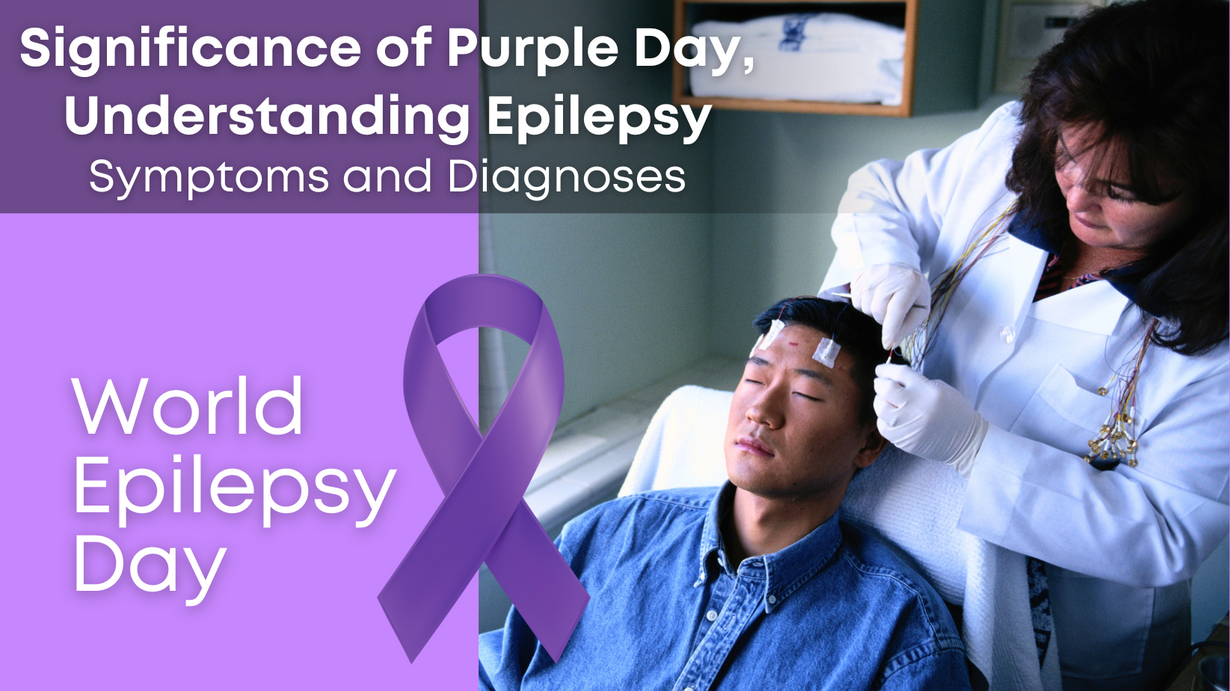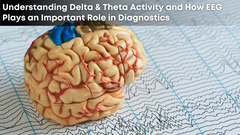Significance of Purple Day - Understanding Epilepsy: Symptoms and Diagnoses
What is Epilepsy?
Epilepsy is a chronic neurological disorder characterized by a predisposition to recurrent seizures. Seizures occur due to sudden and abnormal electrical activity in the brain, leading to temporary disruptions in normal brain function. Epilepsy can have various causes, including genetic factors, brain injuries, infections, and developmental disorders. While epilepsy is a chronic condition, seizures can often be managed with appropriate treatment and support.
Symptoms of Epilepsy:
The symptoms of epilepsy can vary widely depending on the type of seizure and the areas of the brain affected. Common symptoms may include:
> Seizures: Seizures are the hallmark symptom of epilepsy and can manifest in different forms, including convulsions, loss of consciousness, staring spells, or unusual sensations.
> Aura: Some individuals with epilepsy experience an aura, which is a warning sign or sensation that precedes a seizure. Auras can vary widely and may include visual disturbances, strange smells or tastes, or feelings of déjà vu.
> Loss of Awareness: During certain types of seizures, individuals may experience a loss of awareness or consciousness. They may appear dazed, unresponsive, or confused during and after the seizure.
> Motor Symptoms: Motor symptoms such as jerking movements, muscle rigidity, or repetitive behaviors may occur during seizures, depending on the type and severity of the seizure.
How is Epilepsy Diagnosed?
Diagnosing epilepsy typically involves a comprehensive evaluation by a healthcare professional, including:
> Medical History: A detailed medical history is essential for diagnosing epilepsy, as it helps identify potential triggers, risk factors, and previous seizure episodes.
> Physical Examination: A thorough physical examination may be performed to assess neurological function and rule out other potential causes of seizures.
> Electroencephalogram (EEG): EEG is a non-invasive test that records the electrical activity of the brain. Abnormal EEG patterns, such as epileptiform discharges or abnormal brain waves, can provide evidence of epilepsy.
> Imaging Studies: Imaging studies, such as magnetic resonance imaging (MRI) or computed tomography (CT) scans, may be performed to identify structural abnormalities or lesions in the brain that could be causing seizures.
> Other Tests: Additional tests, such as blood tests, genetic testing, or neuropsychological assessments, may be conducted to further evaluate the underlying cause of seizures.
How Can Epilepsy be Treated?
Treatment for epilepsy aims to reduce the frequency and severity of seizures while minimizing side effects and improving quality of life. Treatment options may include:
> Medications: Antiepileptic drugs (AEDs) are the most common treatment for epilepsy and work by stabilizing electrical activity in the brain. There are many different AEDs available, and the choice of medication depends on the type of seizures, individual response, and potential side effects.
> Lifestyle Modifications: Lifestyle modifications, such as getting enough sleep, managing stress, avoiding alcohol and recreational drugs, and maintaining a healthy diet, can help reduce seizure frequency and improve overall well-being.
> Surgery: In some cases, surgery may be recommended to remove or disconnect the area of the brain responsible for seizures. Surgery is typically considered when seizures are not well-controlled with medications or when the seizure focus is localized and accessible.
> Vagus Nerve Stimulation (VNS): VNS is a surgical procedure that involves implanting a device that delivers electrical impulses to the vagus nerve, which can help reduce seizure frequency and severity.
> Ketogenic Diet: The ketogenic diet is a high-fat, low-carbohydrate diet that has been shown to reduce seizures in some individuals, particularly children with epilepsy that is difficult to control with medications.
What to Do if Someone is Having an Epileptic Seizure?
If you encounter someone having an epileptic seizure, it's essential to remain calm and take the following steps:
> Stay with the Person: Stay with the person and ensure their safety by removing any nearby objects that could cause injury during the seizure.
> Protect the Person's Head: If possible, gently guide the person to the ground and cushion their head to prevent injury.
> Time the Seizure: Note the duration of the seizure and observe any changes in symptoms or behavior.
> Do Not Restrain: Do not restrain the person or put anything in their mouth. Contrary to popular belief, it is not necessary to hold the person down or put objects in their mouth to prevent them from swallowing their tongue.
> Reassure and Support: After the seizure ends, gently roll the person onto their side to help maintain an open airway. Offer reassurance and support as they recover.
Significance of Purple Day:
Purple Day, observed annually on March 26th, is an international grassroots effort dedicated to raising awareness about epilepsy and showing support for individuals living with the condition. Founded by Cassidy Megan, a young Canadian girl with epilepsy, Purple Day encourages people worldwide to wear purple and participate in epilepsy awareness activities. By raising awareness, promoting education, and advocating for better access to care and support services, Purple Day aims to reduce stigma, improve understanding, and empower those affected by epilepsy to live full and meaningful lives.
Conclusion:
Epilepsy is a complex neurological disorder characterized by recurrent seizures that can have a profound impact on individuals' lives. By understanding the symptoms, diagnosis, and treatment options for epilepsy, as well as the significance of Purple Day in raising awareness and support, we can work together to improve the lives of people living with epilepsy and foster a more inclusive and informed society. Through advocacy, education, and research, we can continue to strive towards a world where epilepsy is better understood, accepted, and effectively managed.












